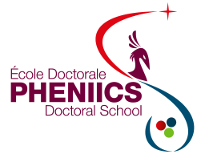Orateur
Mme
Elodie Verzeroli
(Doctorant)
Description
The increasing global demand for energy and the consideration of environmental constraints have rekindled the interest for various forms of renewable energy production modes, including wind energy. In addition to the traditional wind turbines, the new idea is to convert wind energy directly into electrical energy without any moving parts.
The principle of direct conversion is actually quite simple as the wind moves the charged particles at atmospheric pressure against the direction of an electric field, thus increasing the electric potential energy of the charged particles. Then, all these charged particles can be collected by a metallic structure whose potential will rise when particles touch it. That’s why we can call this process a direct conversion of wind energy into electrical energy as there is no more mechanical movement involved.
Even if experimental results have shown some positive yields, the output power is still very low. The most difficult problem in designing a bladefree wind power system is the production of aerosols having the suitable properties, while using input energy clearly lower than the recoverable power.
We aim at understanding better the physics of particle generation and gas interaction including ion emission, fission, evaporation in flight and ion-neutral collisions in the air flow. Currently we are designing a prototype with only one injector at a small scale. If the results are successful, the future would be to multiply the injectors in order to make up for the poor charge production. Characterization methods of the electrospray will also be discussed. Moreover, research on aerosol will also lead to completely different purposes like electrostatic sprays at atmospheric pressure for mass spectrometry.
Auteur principal
Mme
Elodie Verzeroli
(Doctorant)
Co-auteurs
Dr
Bernard RASSER
(Orsay Group)
Dr
Serge DELLA NEGRA
(IPNO)



